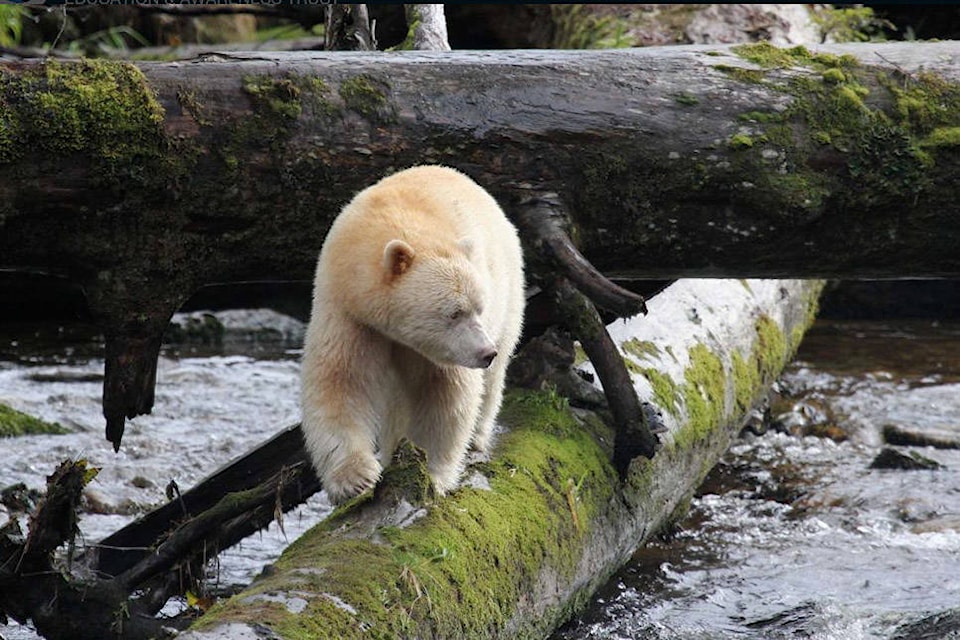A new study has revealed that the gene responsible for the creation of Spirit bears is even more rare than had been previously evaluated.
Spirit bears, also known as Kermode bears, are a rare, white-coated form of the black bear and are native to the Central and North Coast regions of B.C. They are common throughout the Great Bear Rainforest, a temperate rain forest on the Pacific coast of B.C. Spirit bears are also the official provincial animal of B.C.
READ MORE: Spirit bear possibly spotted in West Kootenay
A study by scientists and stewardship practitioners from the Kitasoo/Xai’xais and Gitga’at First Nations, the University of Victoria (UVic), Spirit Bear Research Foundation and Raincoast Conservation Foundation showed that the gene responsible for Spirit bears is up to 50 per cent rarer in the Great Bear Rainforest than previously estimated.
The study, published in the Ecological Solution and Evidence journal, collected and analyzed hair samples from 385 black bears across a section of the Great Bear Rainforest.
Dr. Christina Service, Wildlife Biologist for the Kitasoo/Xai’xais Stewardship Authority and researcher with Spirit Bear Research Foundation, Raincoast, and UVic, led the team that completed the study. They tracked the carriers of the ‘Spirit bear’ gene which, when inherited from both parents gives black bears a white ‘Spirit bear’ coat.
“We found that the frequency of the white version of the gene was as much as 50 per cent lower compared with previous estimates,” Service said. “While ongoing work is estimating the number of Spirit bears in the area, such a finding questions previous estimates.”
The research also revealed that around 50 per cent of the areas where the Spirit bear version of the gene was especially prominent were not part of the protected parks and areas, which Douglas Neasloss, Resource Stewardship Director for the Kitasoo/Xai’xais First Nation and co- author of the study, flagged as an issue.
The Kitasoo/Xai’xais First Nation, Neasloss included, live mainly in the community of Klemtu, which relies heavily on the viewing of bears —especially Spirit bears — in their conservation-based economy.
“Given my community’s cultural and economic connection to Spirit bears, it is not an exaggeration to say that our well-being is directly related to the well-being of these bears,” Neasloss said. “It is critical we find avenues to attend to these gaps in protection.”
For the Gitga’at First Nation, this study also proves the importance of protecting the Spirit bears, as their community has already been doing. They abstained from short-term economic opportunities, such as logging, in prominent Spirit bear habitats to ensure protection for the bears’ natural environments and to advance low-impact viewings of the bears, in a constant effort to continue their line.
“Our territory is the heart of Spirit bear habitat and we have worked successfully to protect critical areas,” Simone Reece, Director of Gitga’at’s Oceans and Lands Department, said. “These findings confirm our ongoing efforts for further protection to ensure the well-being of this amazing species and of our community.”
These findings are important for land use planning going forward, which includes the potential for increased protection in the form of formal Indigenous Protected Areas.
clare.rayment@northernsentinel.com
Like us on Facebook and follow us on Twitter
